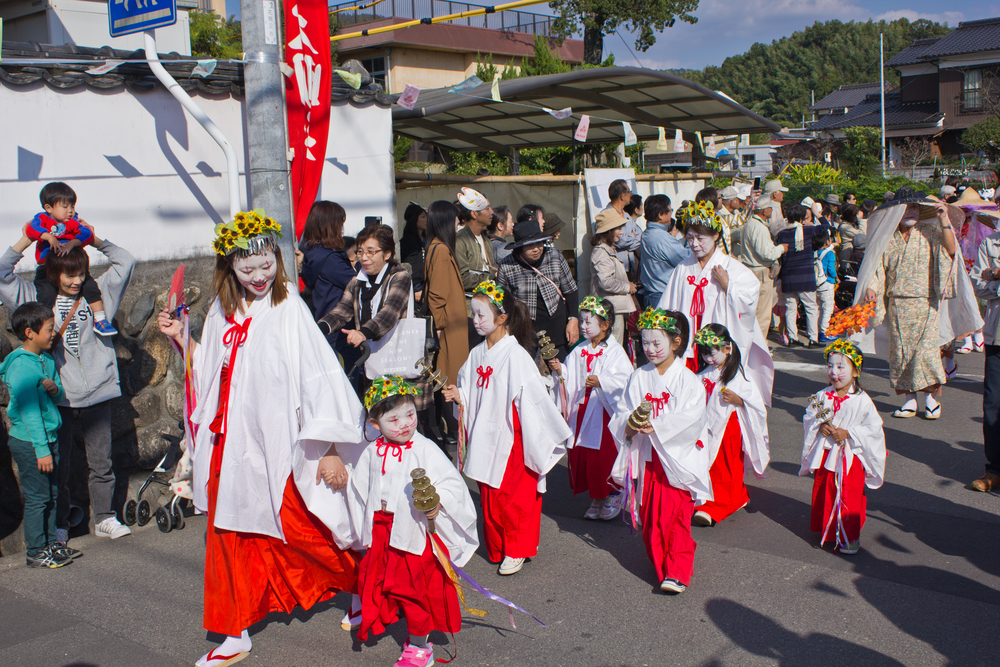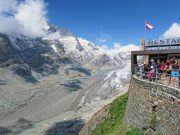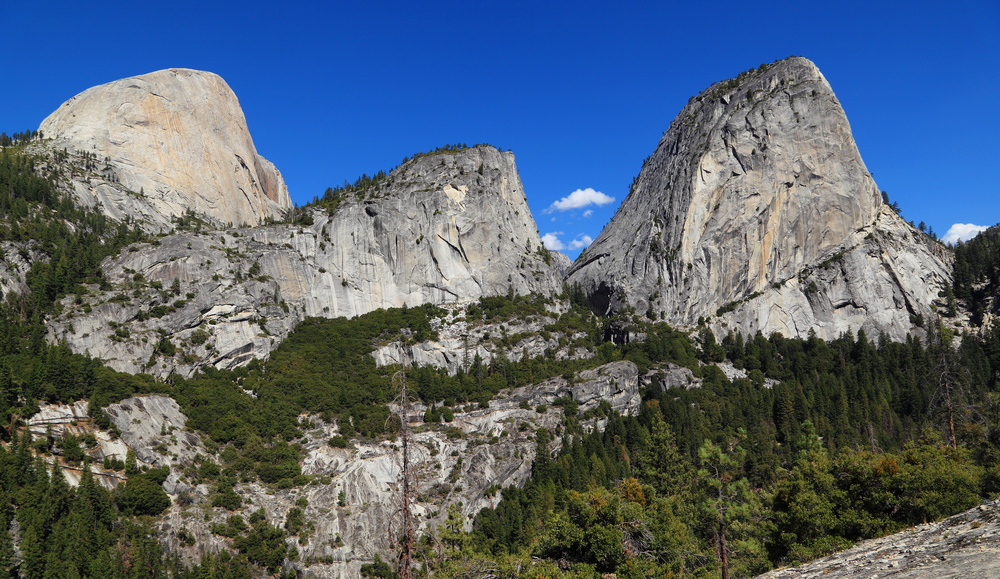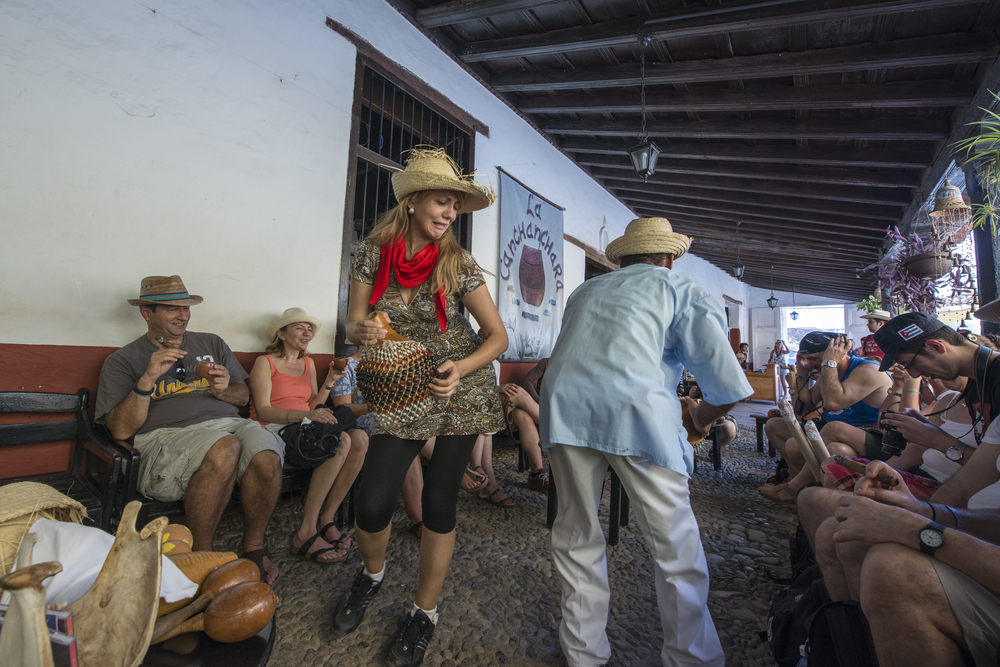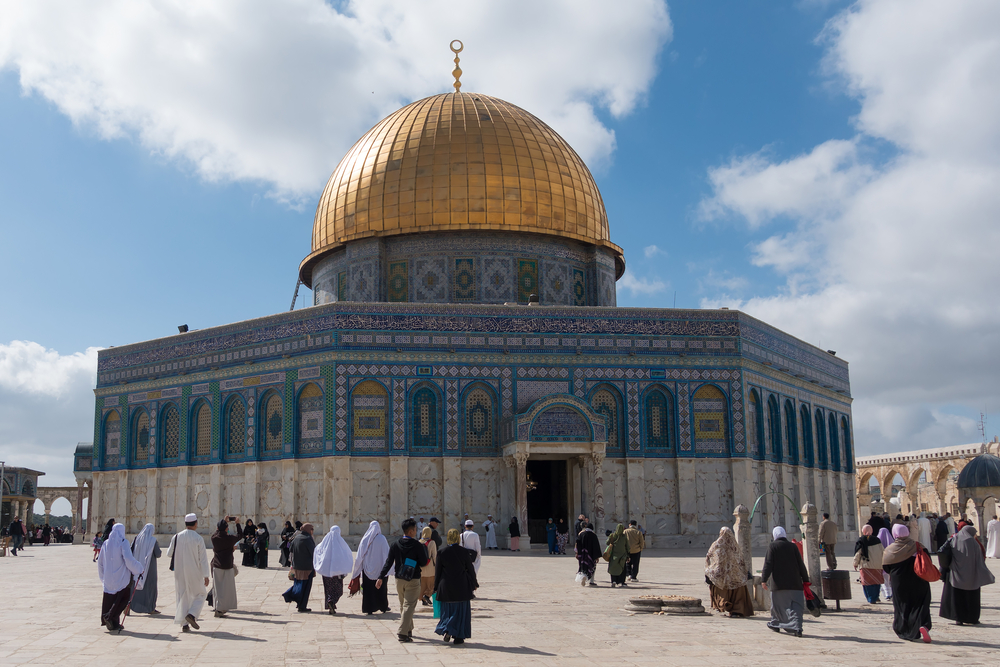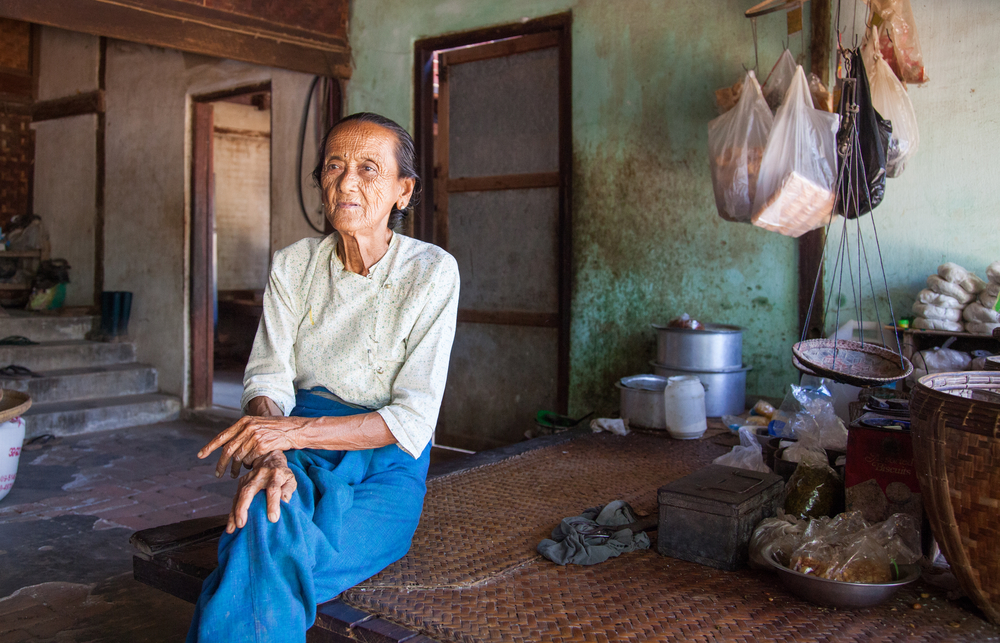By the southwest of Mandalay, Bagan is an old city in Myanmar, previously known as Burma. The city resides by the east of Ayewarwady River. The Bagan Archaeological Area is the green plain for housing over 2,000 Buddhist monuments. Among the many holy sites in Bagan, the Ananda Temple is built in 1091 topped with gold stupa. The majestic 12th-century Dhammayangyi Temple is just nearby.
BAGAN, MYANMAR – March 14, 2015: Traveler walk in passenger terminal at BAGAN international airport. (Nadezda Murmakova / Shutterstock)
Ancient Land of Bagan from Shwesandaw Temple, Bagan (Copyright: Jakob Fischer)
Bagan, Myanmar archeological zone. (Copyright: Sean Pavone)
BAGAN, MYANMAR – 7 DECEMBER 2014 : Hot air balloons fly over Bagan, that always recognised as amazing buddhism landmark. (dmitry_islentev / Shutterstock)
Elaborate sandstone carvings outside the Dhammayangyi Temple, Bagan Myanmar (Burma) (Copyright: steve estvanik)
BAGAN, MYANMAR – DEC 17, 2014: Neophyte praying with candle light in a Buddhist temple on December 17, 2014 in Bagan, Myanmar. (Copyright: February Destu)
Two novice monks walking down a temple corridor (Copyright: Oscar Tarneberg)
Myanmar monk reading a book at old Bagan, Myanmar. (Copyright: Nattawut Jaroenchai)
BAGAN, MYANMAR – OCT 11 2014: An unidentified girls sells postcard in old Bagan archaeology zone. (Boyloso / Shutterstock)
Dhammayazika Pagoda, Bagan (Copyright: Jakob Fischer)
Shwe zi gon pagoda or Paya Temple in Nyaung-U Bagan, Myanmam, Burma (Copyright: Nadezda Murmakova)
Shwezigon Pagoda at Bagan in Myanmar on Feb 01, 2014 :a sacred place of Myanmar and popular favorite of tourist (bundit jonwises / Shutterstock)
BAGAN, MYANMAR – CIRCA OCTOBER 2014: a man in his on cart with temples behind (Katiekk / Shutterstock)
BAGAN, MYANMAR – JANUARY 24, 2016 : Burmese farmers carrying hays on the back in the countryside near Bagan, Myanmar (Nick Fox / Shutterstock)
BAGAN, MYANMAR – JANUARY 24, 2016 : Burmese farmer sifts grains during harvesting time to remove chaff (Nick Fox / Shutterstock)
Burmese woman holding traditional red umbrella and walking on U Bein Bridge (Copyright: SasinTipchai)
Burmese woman holding traditional red umbrella and walking on U Bein Bridge (Copyright: SasinTipchai)
Buddhist monks sit in a boat at U Bein bridge, Mandalay in Myanmar on Feb 03, 2014 : U Bein bridge is famed for the longest teak bridge in the world. (bundit jonwises / Shutterstock)
Middle aged woman on board a wooden boat on the Ayeyarwady River, Bagan Myanmar (Copyright: Darkydoors)
Road sign “Bagan” in front of the market (Copyright: dmitry_islentev)
BAGAN, MYANMAR – JANUARY 21, 2016: Decorated buffalo and local people who participated in the donation channeled ceremony Shinbyu, marking the samanera ordination of a boy under the age of 20 (OlegD / Shutterstock)
MANDALAY, BURMA Feb 12 : Festival Procession in Bagan Town Mandalay Province, Myanmar (Burma) on Feb 12, 2016 (Aoshi VN / Shutterstock)
Bagan, Myanmar – March 11 2015: Carts on background Ananda Temple (kravka / Shutterstock)
Mandalay, Myanmar – May 3 , 2013 : Young Burmese woman sitting on the street and selling food near Mandalay (fototrips / Shutterstock)
BAGAN, MYANMAR – NOVEMBER 22 : Unidentified Burmeses teenage are walking naked feet in area of temple at Shwezigon temple on November 22, 2015 in Bagan,Myanmar (Nuk2013 / Shutterstock)
OLD BAGAN, MYANMAR – OCTOBER 2015 – Unidentified Myanmar women are being taken photo with traditional puppets around. (TRAN THI HAI YEN / Shutterstock)
BAGAN, MYANMAR – FEB 25, 2015 : A Burmese woman with Thanaka sell handicraft product in a temple in Bagan. 89% of the Burmese population is Buddhist. (Jimmy Tran / Shutterstock)
BAGAN, MYANMAR – CIRCA OCTOBER 2014: old lady in her home that also is a shop to sell few food items (Katiekk / Shutterstock)
BAGAN, MYANMAR – FEB 25, 2015 : A Burmese woman with Thanaka paint and sell handicraft product in a temple in Bagan. 89% of the Burmese population is Buddhist. (Jimmy Tran / Shutterstock)
INLE LAKE, MYANMAR – JANUARY 12, 2016: Portrait burmese girl a straw hat in local market. Inle lake, Myanmar, Burma (OlegD / Shutterstock)
MRAUK-U, MYANMAR – JANUARY 27, 2016: Unidentified young Myanmar girl with thanaka on her smile face is happiness. Thanaka is a yellowish-white cosmetic paste made from ground bark. (OlegD / Shutterstock)
Woman Relaxing on Old Pagoda in Bagan, Myanmar at Silhouette Sunrise (Copyright: tounka25)
Bagan,Myanmar-December 17,2014 : An unidentified Myanmar children selling postcards in Bagan,Myanmar. (think4photop / Shutterstock)
Bagan, Myanmar – January 27, 2016 Sunset in Irrawaddy River, Bagan, Myanmar ,view form Bupaya bagon. (Tuanjai Pratumma / Shutterstock)
Bagan, Ancient Capital of a Once Mighty Kingdom
By Markus Burman
On the way to the opposite side of the planet earth the fiery ball of the sun is exploding in a firework of all colours of red, yellow and in-between while it – reflected by the water surface of the mighty Ayeyawaddy River – slowly sets and, finally, vanishes behind the Yoma mountain range that separates central Burma from the coastal areas of west Burma stretching along the Gulf of Bengal. Shortly before the fireball leaves me and thousands of pagodas and temples enveloped in the dark of the night the sun is painting red to pinkish streaks on the increasingly dark bluish and black sky. This is the moment when a myriad of stars start to blink at the firmament and the spectacle of one of the gorgeous Bagan sunsets of which I was privileged to enjoy more than thousand is over. Night has fallen over me and my beloved Bagan the former Pagan, capital of the once mighty kingdom of Pagan.
Yes, Bagan is beautiful and has a charm all its own; but it is much more than what meets the eye. The story of Bagan is the story of a kingdom growing from a little more than village size to about 70 percent of the size of present day’s Burma/Myanmar. It is the story of 55 Bagan kings, of myths and legends, of nats and nagas, of wars, of political intrigues, of lies, betrayal and murder, of Naga cult, Ari Buddhism and Theravada Buddhism.
It is also the story of the fall from a relatively small but bustling and wealthy royal capital to a quiet, dusty place with the austere charm of a semi-desert in Burma’s dry zone. Nowadays no one would speak about it anymore if it were not for Theravada Buddhism and the magnificent temples and pagodas the arid Bagan plains are dotted with. These according to the Bagan Inventory of Monuments (which does not include all historical religious structures) 2.162 pagodas and temples of formerly some 13.000 are still giving valid and vivid testimony to Pagan’s ‘Golden Era’ when the city became known as ‘The City of Four Million Pagodas’. Thousands of religious monuments were built during the reigns of Pagan’s greatest kings king Anawrahta (son of Phyu king Kunhsaw Kyaunghpyu), and king Kyanzittha (son of king Anawrahta) alone.
Today’s dry and dusty plains of Bagan are despite the significantly increased number of tourists still enveloped in a tomb-like silence. They are with their multitude of pagodas and temples an impressive tribute to Buddhism, especially Theravada Buddhism but otherwise there is nothing that indicates that this has once been the heart of royal power; a powerful political and economic centre from which the large kingdom of Pagan was governed.
In many of its features present-day Bagan is still very much like the Pagan that Sir James Scott under his writer name ‘Shway Yoe’ in 1882 in ‘The Burman: His Life and Notions’ described with the words: “Pagan is in many respects the most remarkable religious city in the world. Jerusalem, Rome, Kieff (Kiev), Benares none of these can boast the multitude of temples and the lavishness of design and ornaments that make marvellous the deserted capital on the Irrawaddy… the whole space is thickly studded with pagodas of all sizes and shapes, and the very ground is so thickly covered with crumbling remnants of vanished shrines that according to the popular saying, you cannot move foot or hand without touching a sacred thing.”
None of Bagan’s present features corresponds with those that are usually associated with the idea of a city. On the contrary, to the foreigner Bagan appears to be nothing more than a sparsely populated and overgrown village comprising primarily of in their vast majority rather simple bamboo huts and wooden houses spread over an area of 40 square miles/104 square kilometre. All of the parts such as huts, houses, hotels and guest houses as well as the ancient temples, pagodas, monasteries, ordination halls, libraries and a gate together with a small piece of the old city wall that make up the rather rural Bagan are connected mostly with bumpy dirt roads, sandy trails and – as for the main thoroughfares – nowadays tarred roads.
Life in Bagan is simple. For the many farmers and their families it is still dominated by hard physical work and has with the exception of some modern technological achievements such as bicycle, scooter, motorcycle, automobile, television and radio not much changed since ancient times. Horse carts and bullock carts are still very important modes of transportation and it is still ancient wooden ploughs drawn by bullocks that are used by the farmers to plough their fields. Crushing sesame to extract oil is often still done by having a bullock walking circular around a stone mortar driving a hardwood grinder. Sowing and harvesting is still done by hand and it is still the Toddy climber who is sapping the juice of the Toddy palm.
The vast majority of Bagan’s inhabitants are living in rather poor conditions and without tourism Bagan would have a very, very hard time to survive because it depends heavily on income from hotels, guest houses, restaurants, lacquer ware, wood carvings, paintings and other Bagan souvenirs and tourism related services.
Bagan’s major pagodas and temples are although still impressive only a shadow of their former selves and are still waiting to be put on the UNESCO World Heritage List what would secure their being professionally restored to their old glory. Alas, so far almost the opposite has been done.
Following the in 1992 by the government issued order to restore Bagan’s historic pagodas and temples this has been done under gross neglect of historical accuracy using unskilled labour and wrong materials, which has caused significant and often irreversible damage. Also, rich Burmese Buddhist have in merit-making frenzy built new smaller and wrongly shaped pagodas atop ancient pagodas. Another problem was the uncontrolled white-washing of pagodas’ and temples’ interior and exterior what has made its contribution to causing great damage to historic murals and stucco-work.
Among the most important witnesses of ‘Pagan’s Era of Greatness’ that are worth preserving due to their historical, religious and architectural value are the Shwezigon Pagoda, Ananda Temple, Thatbyinnyu Temple, Gawdawpalin Temple, Dhammayangyi Temple, Gubyaukgyi Temples, Shwesandaw Pagoda, Sulamani Temple, Htilominlo Temple, Lawkananda Pagoda, Dhammayazika Pagoda, Bupaya Pagoda, Abeyadana Temple, Nanphaya Temple and the Manuha Temple.
As important as the pagodas and temples are to Bagan they are telling only a part of the Bagan story. Lifting the curtain of myth and legend behind which Bagan’ s real history is hidden shows that the story of Bagan is not only one of glory, splendour and beauty. It is also a story of crimes; and here we do not speak of petty crimes but very serious crimes that include patricide, fratricide and murder committed to get to the top and stay at the top. Crimes committed to gain unlimited power and keep it and to amass unimaginable wealth. Here are a few examples of the capital crimes committed by Bagan royalties:
King Kunhsaw Kyaunghpyu (Anawrahta’s father) usurped the throne from king Nyaung U Sawrahan.
King Sokkate (Anawrahta’s brother) seized power from king Kunhsaw Kyaunghpyu (his father) and imprisoned him in a monastery.
Anawratha killed king Sokkate (his brother) and almost the later king Kyanzittha (his son). King Anawrahta was later assassinated.
King Kyanzittha (king Anawrahta’s son) killed the architect of the Ananda Temple.
King Alaungsithu (son of king Sawlu) was murdered by Narathu (his son).
King Narathu killed Min Shin Saw (his elder brother), one of his wives (queen Kyaban), one of queen Kyaban’s sons and the scribe Mahabo (his uncle).
King Narathihapate was killed by Thihathu (his son).
This is the dark side of the story about power and the Royal families of the Pagan era. However, the fact remains that my beloved Bagan is very beautiful and that I cannot wait to be there again to enjoy, among others, Bagan’s tranquillity and its spectacular sunsets.
I am German by birth but am living since 25 years in Burma/Myanmar and know the country, its people, its culture and its history very well. This has made me an authority on Burma. After retiring in 2012 I turned writer.
For more information please visit my website http://www.realburmabyburman.com and my YouTube channel http://www.youtube.com/user/BurmaByMarkBurman
Article Source: http://EzineArticles.com/expert/Markus_Burman/2114042
http://EzineArticles.com/?Bagan,-Ancient-Capital-of-a-Once-Mighty-Kingdom&id=9001427



